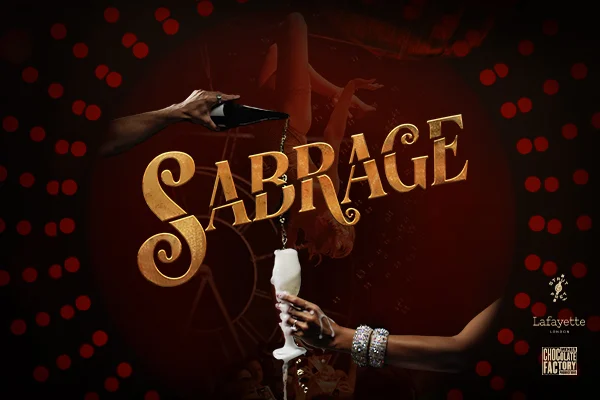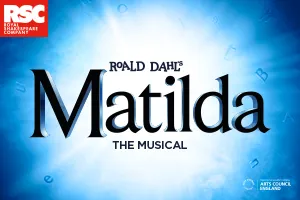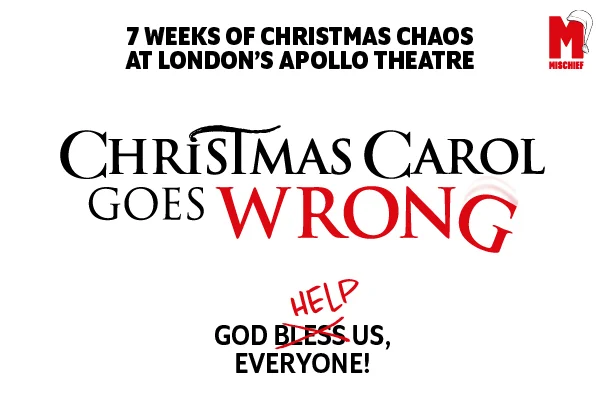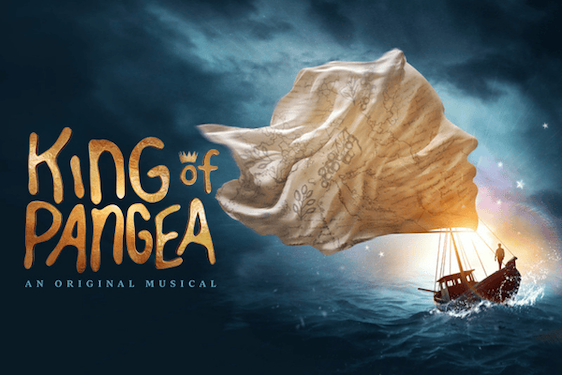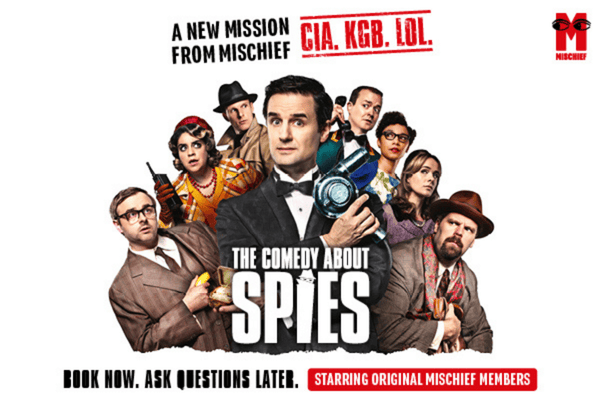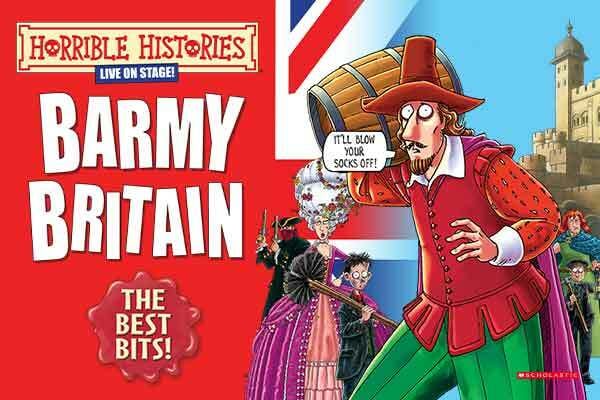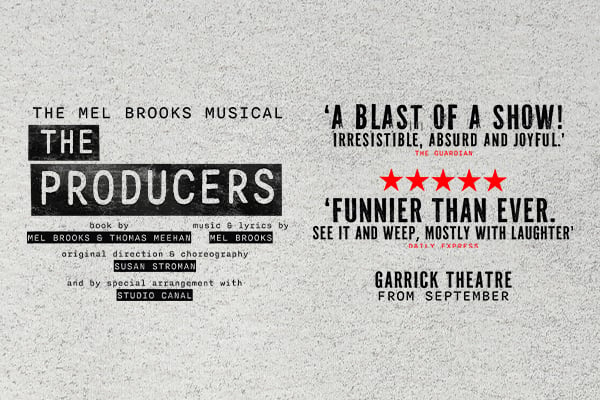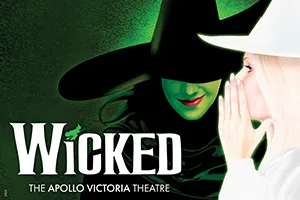I was lucky enough to speak to Ed Gamester, the brains (and brawn) behind the fan favourite Edinburgh Fringe 2022 show Mythos: Ragnarok. As he and the cast take the show to Brighton this year, we spoke about the origins of the show, his love of physical performance and what he would say to his critics.
Forget everything you think you know about wrestling and come for the experience
Ed Gamester, lovely to speak to you! How are you doing?
I am doing very well, thank you! The sun has finally come out just in time for the finale of our UK tour next Saturday, then it’s Fringe season. So it’s a very exciting time!
A little about yourself to start – you describe yourself as a “multi-discipline performer”. Can you give us some examples?
The performance industry tends to be specialised. You have stage actors, screen actors and voice actors; you have stage combat, screen action and stunts; you have stand-up comedians, improv artists and comic actors. There’s crossover, but they’re all distinct skills and specialised styles.
Like most performers, I do a few of them (some better than others). What seems to interest people, however, is that I tend to do them at the same time: acting, storytelling and improvising while performing stage combat, fight routines and stunts. It’s a fairly dynamic form of performance that (I am told) feels alive and dangerous because, I suppose, it is!
I attribute that hybrid style to having worked for many years with professional wrestlers who are, in my humble opinion, some of the most well rounded and under-rated performers in the world.
Did you watch a lot of wrestling growing up? What made you want to get into the industry?
I discovered wrestling in the 90s when WCW Nitro (bizarrely) used to come on directly after Cartoon Network. As a child, wrestling seemed like the live action version of the cartoons I had just been watching: the battle of good and evil played out by exaggerated characters and archetypes (or stereotypes) with superhuman powers.
I adored it immediately and, from that point onwards, wrestling became a constant in my upbringing: I watched it as a fan, I studied it as a performer and I competed across the country as a freestyle Olympic-style wrestler.
At the weekends, my brother and I took to our garden to film our own wrestling shows, based around stories and characters we had created during the week. As fun as the physicality was, it was the interplay of imaginary characters that was limitless and, therefore, truly addictive.
It took a few years and a few horrifying realisations about the ‘legitimacy’ of the combat, but by the time I was 16 I understood that wrestling was a performance industry and I could be part of it. 20 years later, I’m trying to do something totally new with an artform I’ve loved for my whole life.
I first saw your show Mythos: Ragnarok at the Edinburgh Fringe 2022. I had no idea what to expect. It ended up being one of my favourite shows of the year: action-packed, funny and genuinely exciting. Can you tell us what made you have the idea to combine professional wrestling and Norse mythology?
Well firstly, thank you! That fringe run was an enormous risk for me: I paid for the whole thing myself, so even if it sold the average number of tickets for a Finge show I knew it would bankrupt me.
I felt like I had to take that risk, to show people a new version of wrestling that I hoped would make them feel how I felt about it as a kid. Fortunately, thanks to the hard work of the cast, the support of the public and the enthusiasm of reviews like yours, we eventually sold out and made history as not only the first ever theatre show to use wrestling this way, but the first wrestling show ever to do a run at Edinburgh Fringe!
As a wrestler turned actor and stunt performer, I started developing the idea of the combination of theatre and wrestling back in 2019. My initial productions had nothing to do with mythology; they were improvised immersive performances that showcased the ability of wrestlers to act, create and perform in the moment.
When I decided to write a story and script for the show, the idea to base it in Nordic mythology seemed obvious. The myths are already like wrestling storylines: they involve exaggerated and archetypal characters getting into bizarre disputes that are often settled with some kind of violence. Having enjoyed and studied Nordic mythology since I was a teenager (even for a while at university) I was excited to create my own adaptation that put a new spin on ancient stories while doing justice to the traditional versions that I loved so much.
The show is a journey through Norse mythology. How long did it take you to write it and did you find it challenging?
Mythos: Ragnarok took me forever and a day to write. It took forever because I had been studying and building my own version of the Norse myths for my entire life. It took a day because, when it came time to put pen to paper, I wrote the script in 24 hours. We’ve adapted and improved it a lot since then, based on almost 50 performances, but the story has remained the same.
As with all adaptations, the primary challenge was working out what to leave out, what to keep in, which details to alter and which to preserve. Attempting to fit everything from the dawn of creation to the apocalypse into 90 minutes was impossible, so my challenge was to choose moments: particular scenes, lines, jokes and comments that reference and build upon the wider mythos upon which the show is based. You don’t need to know anything about the myths to understand everything that’s going on in the show, but there are plenty of hidden gems for those who know the mythology.
'Viking culture' has undergone a massive boom in popularity in recent years, so I knew another challenge for my show would be the perception that we were jumping onto that bandwagon. That made it even more important to ensure my story was as loving and faithful an adaptation of the myths as possible, designed to be equally enjoyable for those who have enjoyed the myths forever and those who haven’t even seen Marvel’s version of Thor.
From my knowledge of watching some wrestling growing up, athletes perform for about ten or fifteen minutes per show a few times a week. Your show is over an hour long and you’re performing it every day, sometimes twice a day. How do you not get knackered?
A typical wrestling match may be fifteen minutes long, but they’re fifteen very intense minutes! You create moments to rest, but otherwise you push yourself as hard as possible in the knowledge that it’ll be over fairly soon.
Our show is a lot longer than that, but our fights are shorter; they occur as part of the story we’re telling, rather than dedicated matches. Nevertheless it’s a very physical show and performing regularly is tough even for trained professionals – especially because we have to remember a whole script in-between getting dropped on our heads, which is something we never had to do in wrestling!
Wrestling tours can involve performing twice a day for months on end, while travelling thousands of miles and trying to stay in shape. It’s a brutal and unforgiving way to make a living so, in some ways, performing the same show in the same venue every night is a blessing. In other ways the lack of variation can present a challenge, especially when the bruises start multiplying.
So the short answer is that my cast are hard as nails! They are working wrestlers, competitive athletes and stunt performers: tough people pushing their endurance on a nightly basis because it’s what we love to do.
The cast are all in brilliant shape. Has anyone ever injured themselves during the show? What happens then?
I’ve written and choreographed the show to give us the best chance of making it through each night, week and month unscathed, but injuries are inevitable – simply by virtue of the sheer number of knocks we take. We had a few injuries at Edinburgh Fringe last year and we just had to work around them: using different body parts, changing our choreography and doing whatever was necessary to make it through each show, then adapting the next show accordingly. I spent the whole month landing on my side to protect an agonising and rapidly swelling elbow!
That’s just something you learn as a working wrestler and we’re not alone: dancers, circus performers and sportspeople are all familiar with patching themselves up before, during and after their performances. It’s all part of pushing your endurance and making a living as a physical performer. Even guitar players have to superglue their fingertips from time to time! Yet things happen in wrestling that simply don’t occur elsewhere. We can get knocked out cold in the middle of a show and things will carry on as normal: somebody reminds us where we are and what we’re doing – and we’re off again. I’m not suggesting that’s the right way of doing things, but spending years in that type of environment has made us particularly difficult people to derail.
Of course, sometimes people can’t go on – or simply shouldn’t. That’s why every role in the show has at least one backup performer these days, so there’s always somebody ready to take over. As director, I have to trust my cast to be honest about whether they’re fit to perform; when your whole income comes from performing, it’s difficult to take the night off because you’re tired, sore or injured – but sometimes it’s necessary to protect the people with whom you’re working.
One of my ambitions for Mythos is to offer scheduled rest days and stand-down pay to anyone involved in my shows, so people don’t feel like they have to perform every single night just to pay the rent.
The word 'fake' is thrown around by some people when talking about wrestling. Having seen the show, the athleticism is very real, even though there is scripted dialogue. Is the whole show perfectly choreographed or are some wrestling moves made up in the moment?
It’s weird, isn’t it? Most performance art involves presenting imaginary situations as real. When actors do it, they’re 'playing'. When comedians do it, they’re 'improvising' or doing their 'routine'. Circus, dance and stunt performances are 'choreography'. It’s only wrestling that gets called 'fake'.
That's especially strange when you consider how much closer to reality our performances are than most. If I hit you, you’re going to know it’s coming and I’m going to try my best not to injure you...but I’m still going to hit you, it’s still going to hurt and there’s still a chance I might (accidentally) break your nose. Calling that fake in a world of stage slaps and camera angles is nonsense, but I think I understand why people do it.
People don’t go to the theatre looking for evidence that the play isn’t happening for real. It would entirely destroy their enjoyment! Yet in the same way that people call magic performances 'tricks' and try to spot how they work, because it makes it easier to enjoy having their senses baffled, people look for evidence that wrestling isn’t 'real' because it makes it easier to enjoy watching us do something painful and dangerous.
Nobody enjoys watching us blatantly pretend to fight, but equally they don’t enjoy watching us legitimately hurting each other. For our performance to be entertaining, it has to be legitimate enough to be engaging without being too real to be enjoyable. Yet every audience is different: a performance that would be tame and uninteresting to a wrestling crowd might be uncomfortably brutal for a theatre audience – so we have to be adaptable.
Just like the lines we’re saying are scripted yet affected by interpretation, improvisation and interaction with the audience, so too is our fight choreography planned, but flexible. Sometimes we change things in the moment for safety, entertainment value, or simply because it makes sense in the context of what’s going on. Just like acting, it’s an honest reaction to the situation – not just a series of movements for the sake of it.
In my opinion, this is one of the things that make our show so engaging and exciting: what you’re seeing hasn’t been choreographed and rehearsed to death. It’s very much alive and happening right in front of your eyes!
Wrestling seems to polarise audiences. Several critics have thoroughly enjoyed this show, even though they’ve stated before that they 'wouldn’t pay to watch WWE'. What would you say to other people out there who may think similarly?
Forget everything you think you know about wrestling and come for the experience. We had over 100 reviews on EdFringe.com last year from a massive variety of people and they were all overwhelmingly positive. Yet even if you hate it, you’ll have seen the only show of its kind in the world! You’ll also have helped a cast who are working prodigiously hard to carve out careers in an industry that, until now, has shunned them.
People who dislike wrestling tend to think of it as either mindless violence or fake fighting with bad acting. Although I disagree with both those representations of wrestling, I understand where they come from and why they’re unappealing. Mythos, by contrast, is everything I love about wrestling outside of the pseudo-sporting context that so many people find uncomfortable. It’s the art of playful live storytelling, by phenomenal performance athletes who bring legendary characters to life right in front of your face. The wrestling element, in all honesty, is secondary to the storytelling: it just happens to be how the characters fight, if and when fighting is their only option.
We’ve had wonderful feedback from critics who openly dislike wrestling and deplore violence, because they appreciate Mythos as a 'masterclass in stage combat' and a 'cohesive piece of theatre rather than a sporting event'. This is important to me because my project is designed to bring wrestlers into the limelight as performance artists, not just people who pretend to fight.
I’m amazed that, in a world of corporate sports entertainment juggernauts, my little show is the first of its kind – and the only one presenting wrestlers in this way. We haven’t had a penny of grant money or arts funding: everything you see was built off hard work, huge risks and a desire to improve the industry for ourselves and everybody else. I’m tired and I’m aching, but I’m eternally grateful to everybody who has helped us make it this far and believes in what we’re trying to achieve, so thank you for letting me share some of our story with you.









